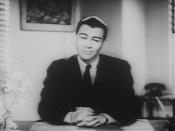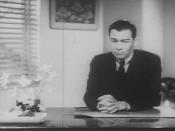In James Joyce's "Araby" various spaces are used to symbolize guilt, lust and sex. The narrator's desire to venture from home in order to attend a Bazaar, Araby, parallel his desire have his first sexual experience. The narrator's home is a place of religious type guilt and secret lust, as represented by the artifacts of a dead but sexed priest who once lived in the house. As Araby is the farthest point from home to which the narrator ventures in the story, it comes to represent the sexual act itself; the farthest point from the abstinance that his house both encourages and makes desireful. All sexual actions within the house are masturbatory, and those just outside of it futile and un-fulfilling as their proximity to the house/bazaar allow them to be. At the end of the Bazaar the narrator feels the shame and disappointment of an unfulfilling and overly anticipated first sexual experience.
He has no choice, after the act, but to return home where guilt awaits him.
The first page of the story describes the house and the street in which the narrator lives. The narrator explains that the former tenant, a priest, "had died in the back drawing room. Air, musty from having been long enclosed, hung in all the rooms."(29) The priest makes his presence known in the house through a mustiness and some books which are unusually sexual for a priest (footnote). Though the house has a feeling of being closed in (the street is "blind" and "quiet") the garden is described as being Eden-like in its wildness, it "contained a central apple-tree and a few straggling bushes under one of which I found the late tenant's rusty bicycle pump."(29) The priest leaves a remnant of himself again, this time a fallic tool,


